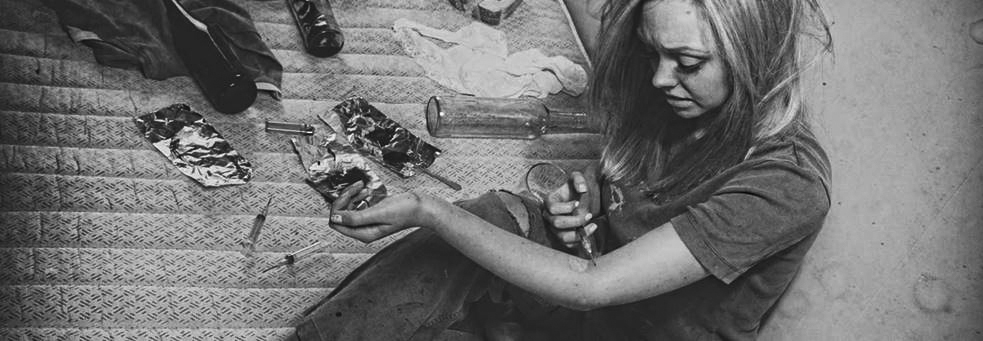Americans In Pain and Addicted: Untangling the Opioid Crisis
- Home
- Blog

Part Four: Climbing Up from Rock Bottom
When my coworker Dr. John Carr first met Margo, she was a frightening, naked mess. As he appeared at the door of the inpatient psychiatric unit where she had been hospitalized, he could tell she had not showered in some time. Her hair was as wild as the crazed look in her eye as she began to hurl every loose object in sight his way. As my colleague dodged the hurled books, pillows, and articles of clothing, Margo began screaming out vile threats describing what she would do to him if he refused to give her the medication she craved.
Dear reader, this is the desperate portrait of an addicted American hitting rock bottom—and when it comes to the opioid crisis, this “rock bottom” is as diverse as the victims who sink into its depths.
Let me ask you a question: When you think of a drug user who has truly bottomed out, what do you picture? I’d venture to guess the image doesn’t look too far off from Margo. We’ve all seen the disturbing portrayals of addicts in the media: The filthy meth den from Breaking Bad comes to mind. Unfortunately, these stereotypes often only help us emotionally distance ourselves and our loved ones from users and addicts—when we imagine someone naked, filthy, and screaming out for help, it’s all too easy to assume we’d never wind up in such a harrowing narrative—“That could never happen to me!”
Maybe for some, that’s true. But before you get too comfortable, allow me to divulge a big secret with you that many in my profession already know: When it comes to developing an opioid addiction, no one is 100% immune. This epidemic lands on the doorstep of every race, gender, and class—and the “rock bottom” people face is often determined by how wide their social safety net can reach. It is too easy to push this crisis aside as someone else’s problem to manage, or to blame it on circumstance, lifestyle, weakness, or bad habits. In the next two blog posts, my goal is to infuse some humanity into that perspective by showing how two drastically different patients reached their personal rock bottom—and how, with empathy, compassion, and proper medical treatment, they were able to begin to see daylight ahead of them once again. In sharing Margo’s story with you this week, I challenge you to break through stereotypes to see her wounds as you might see your own—and to view her journey not through the lens of “fault” but compassion.
When Dr. Carr first came in to evaluate Margo, she was suffering from severe heroin withdrawal and had descended into a horrifying nightmare. However, there were several facets of Margo’s past that made her particularly vulnerable to hitting rock bottom—the most important of which was that Margo had been diagnosed some time earlier with bipolar disorder. She was a good student and friend in high school and came from a respectable family. Like other kids her age, she experimented with marijuana in her late teens and never suffered consequences. But just after high school graduation, she experienced her first manic episode, the severity of which landed her in the hospital for several weeks. She took well to medication, however, and was able to enter college not long after, where she continued her recreational use of marijuana. After some time, she stopped taking her mood stabilizers and antipsychotics. She soon suffered another manic episode.
I’d like to take a moment now to pause and consider just how common Margo’s case is: A teen who smokes pot recreationally forgetting to take her meds. Hers is a story that could happen to anyone—unfortunately, hers gets worse.
Margo took significantly longer to recover from her second manic episode than from her first—and it necessitated her taking a medical leave of absence from school. She soon became pregnant with her boyfriend. While the pregnancy was unexpected, life seemed good. Margo was taking her mood-stabilizing medication regularly, her boyfriend had a steady job, and she had a great relationship with his family, who happily offered their support. After a few months, however, Margo began experiencing unexplained numbness, tingling, occasional trouble walking, and severe pain. Her primary care doctor prescribed her opioid pain medication. Multiple Sclerosis can be difficult to diagnose. It took her doctor months to do so—by which time Margo had become addicted to her new meds.
As you learned in my previous blog, once opioids are introduced, it is shockingly easy for anyone to get hooked—and Margo did. Her life quickly devolved. As her doctor became more suspicious of a possible addiction, she began seeking out an easier (and cheaper) route to get what she needed: Heroin. Her mood became erratic and wildly uncontrolled; she was alienating those around her and driving them away. When she began to trade sex for drugs, her loved ones abandoned her completely and she was forced onto the streets. By the time Dr. Carr reached out to her, she had been homeless for several years.
Let’s pause here for emphasis. I really need you to understand this: Margo was a woman who came from a normal household, but who suffered from a mental disorder that is notoriously difficult to manage. Teen brains are not fully developed until their mid-twenties, so being meticulous about medication is difficult and the consequences of not adhering to a medication regimen cannot be fully appreciated. For women in Margo’s position, the safety net is remarkably thin. Margo’s family abandoned her and she slipped through the fingers of her primary care physician. With her own son taken away from her because of her actions, what’s left but to try to numb the pain for as many hours of the day as possible?
Margo’s problems were complex: Her addiction problems were partly predicated on her mental disorder and her physical disease. So when it came to finding an appropriate treatment plan, Dr. Carr had his work cut out for him. As he stood at her doorway in the inpatient facility, observing her outburst, he took the most important step: He stuck around. He stayed with her as she cried and sobbed, and told her that he could help make her feel better. After she calmed down a bit, she was induced with suboxone, an anti-opioid medication that immediately helped stabilize her condition. Together, they listed out all of the previous medications Margo had taken and began coming up with a game plan, with Dr. Carr agreeing to Margo’s one wish: “Whatever you do, don’t turn me into a drooling butterball turkey.”
In an effort to treat the whole person—not just her disease and not just her addiction—Dr. Carr implemented a multifold strategy. To help her ease her aloneness through her addiction, he referred her to a 12-Step program. For her opioid addiction, he immediately placed her on buprenorphine. With a working knowledge of what Margo had taken in the past for her bipolar disorder—including which side effects she could tolerate and which she could not—Dr. Carr and Margo came to an agreement on a medication regimen. Finally, he asked that she visit him in his outpatient office to discuss her progress. And she agreed.
I want you to appreciate something about treatment: Progress is not a straight line. It takes twists and turns, there are relapses and setbacks and high mountains to climb. But, together with a caring medical professional, you push forward and climb them. Slowly, painstakingly, a patient can move toward a more optimistic future, first at a crawl, then a walk, and then, finally, a joyous sprint.
Margo had ups and downs. She stopped and started her medications. But—she faithfully kept coming back to visit with Dr. Carr. During their talks, she would complain how bad her life was, how much she missed her son, how she was a terrible freak of nature who got what she deserved. She asked Dr. Carr how he could even tolerate being in the same room as her. “It took Margo about a year and a half to believe I genuinely did want her to feel better, and that she was deserving of care. That I was not burdened by her presence”, commented Dr. Carr. But once she realized she finally had someone in her life that cared for her unconditionally, who tried really hard to understand and support her, something shifted. She began to see there was something good inside of her. Her mood stabilized and so did her psychotic symptoms. She stayed sober. And, now, years later, she’s finally been able to establish a connection with her son.
Margo is back in college now, and is a voracious reader. She continues to do what she can to be sure she and her son have a secure future. Now, at the end of her story, I turn the question back to you: What do you think saved her? What motivated her to start taking her meds more regularly, and to start believing that she was worth something, and had potential to bring happiness and joy to the world?
Now consider again that Margo had been entirely abandoned by all those who had loved her. With that in mind, I would argue that it was Dr. Carr’s stable presence and steadfast care—that allowed her to truly change. That’s what my team and I try to offer our patients every day: unconditional empathy. There is such power in acknowledging someone’s personhood—and a little goes a long way from those who are in a position to give that to someone else. As my father-in-law, a 100-year-old retired psychoanalyst taught me years ago, “Never underestimate the power of listening. You may be the first person in their entire lives who ever listened.” In this heart wrenching, life-ruining, country-shocking crisis, I want to extend that compassion and empathy outward to all my readers. When it comes to finding solutions to our most harrowing problems, it takes a village. Let’s show each other love and not judgment. This crisis hits everyone.
Is there someone you love, someone in pain, who deserves to be listened to with more empathy and compassion? Think about it.
Special thanks to Dr. John Carr for sharing his story. Names and identifying details have been changed to protect the patient.


